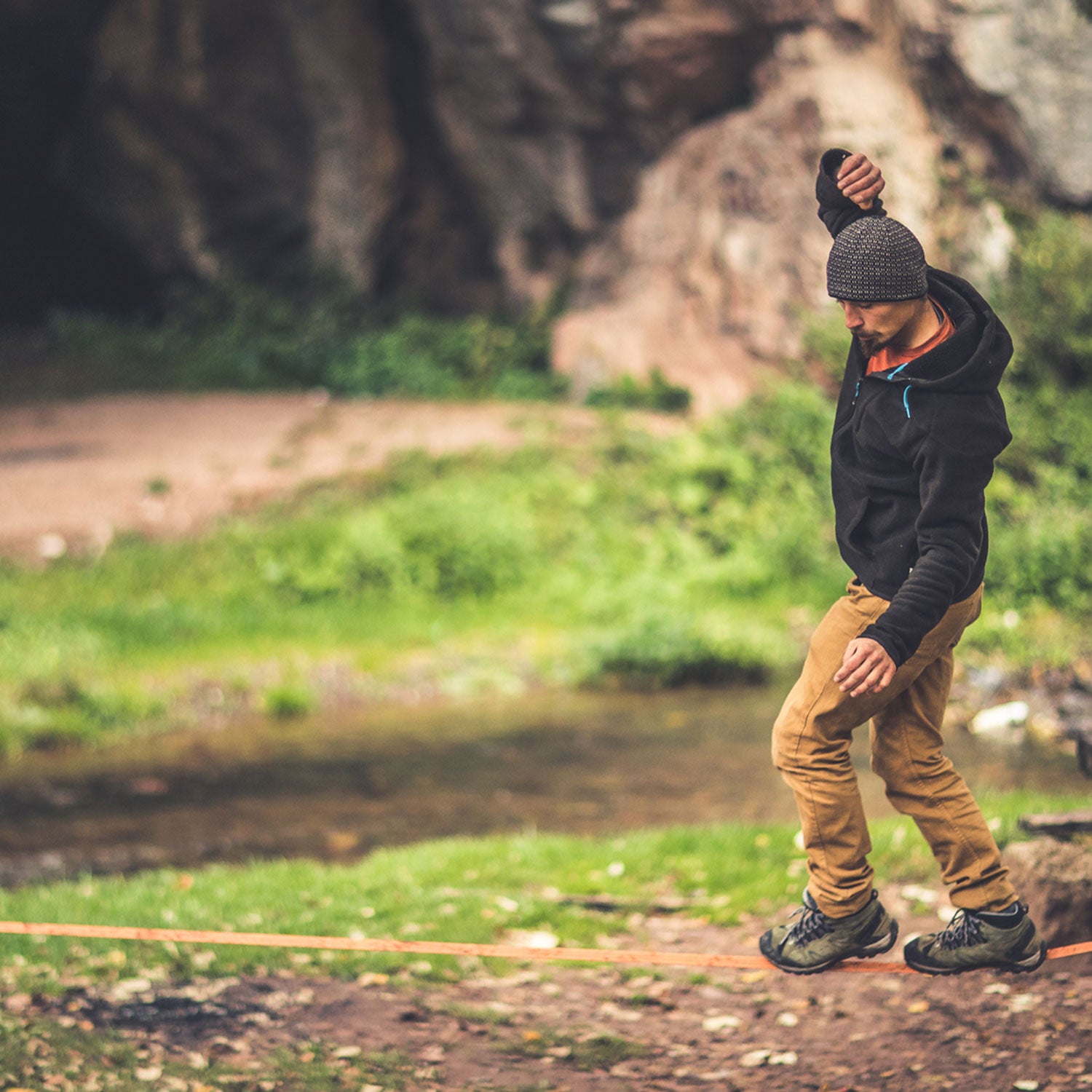If you’ve ever hung around college quads, climbing crags, or even public parks, you’ve probably seen someone walk barefoot, arms flailing for balance, across a one-inch-wide line of taut nylon webbing strung between two trees. Slacklining may look like a questionable use of daylight, but according to Yosemite big-wall climber , it’s “like walking meditation.” Sauter, who holds all-female team speed records on three El Capitan routes, took up the sport in 2007 and noticed that it’s helped on ascents. “It narrows your focus; everything falls away.”
Recent studies suggest that it may also improve core balance, help prevent knee injuries, and aid in strengthening and rehabbing your legs. Here’s why you should consider adding slacklining to your regular fitness regimen.
Better Balance
Balance and stability are foundational to many adventure sports. If you’re looking to gain side-to-side mobility, a 2012 from researchers at the University of Fribourg, the University of Salzburg, and the Christian Doppler Laboratory may hold your answer.
The researchers found that slackline training improved their subjects’ postural control, which, broadly speaking, refers to your ability to stay when something shifts underneath your feet. “The study shows that [the balance improvements] seem to carry over to similar tasks that require side-to-side stability,” says , clinical director at Therapeutic Associates Physical Therapy in Corvallis, Oregon. Zhao suspects that slackline training could boost devotees’ balance in “trail running, hiking, skiing, and stand-up paddleboarding.”
Injury Prevention
Beyond boosting your equilibrium, slacklining may also help prevent some common leg injuries. “Studies using traditional balance training have indicated that stability exercises could prevent some lower leg injuries,” says , an associate professor of kinesiology at the College of William and Mary. “Knee injuries, ankle sprains—that sort of thing.”
In 2015, again from the University of Salzburg concluded that slacklining improved knee joint stability. (The university does not, we can confirm, have a school dedicated to slacklining.) The results implied an “injury preventative effect,” says , the study’s lead researcher. “Standing on a slackline is a much greater challenge compared to other unstable training devices,” he says. “It may be useful for athletes to increase sports performance in general, but also for advanced therapy after ACL ruptures or ankle sprains.”
Rehab and Recovery
In 2014, Trey Robinson, a weekend-warrior marathoner living in Austin, Texas, read an article that claimed slacklining could heal knee injuries and decided to test his bum ACL against that theory. Robinson added the activity to his workout and spent ten minutes each day practicing in his backyard. After seven months, Robinson since his ACL surgery.
In fact, a by the University of Louisville and the University of the Sunshine Coast, published in 2013, claims that slackline exercises helped restore muscle activation in the study volunteers’ quadriceps at “significantly lower level of perceived exertion” than the four other activation exercises the scientists had them complete. That may sound underwhelming if you don’t have a kinesiology degree, but muscle activation is a big deal. That term simply means “the ability to use a muscle when you need it,” says Zhao. If you damage one of your muscles, other muscles must compensate for it. If you don’t rehab properly and restore muscle activation, long-term compensation can alter a joint’s alignment and .
Michael Pang, a doctor at the Banner University Medical Center in Phoenix who is known as the “,” has watched plenty of his friends slackline. “I think it has definite benefits in the rehab therapy arena,” says Pang, who climbs outside almost every other day. “It helps strengthen the lower limb muscles and improves core and balance.”
It’s Social and Portable
Science aside, the top benefit of slacklining may be that it’s just good fun. “It’s simple and portable,” says Harris. “Tying a line between two trees with your friends may be more appealing than standing on a balance board in your room. If you can make exercise enjoyable, people are more likely to do it.”
Sauter, who has slacklined on every continent except Antarctica, agrees with Harris. “I’ve brought lines on treks through Ethiopia, on work trips to Ukraine, and participated in festivals all over Europe,” she says. “It creates a whole different connection to the environment—setting up a line in a local park is a surefire way to meet new people.”


